Jump to:
How long does hair have to be to braid? Not as long as you’d think. Your hair might already be long enough if you use the right technique! Read on to learn about the length required for braiding and how to do it.
How Long Does Hair Have to Be to Braid?
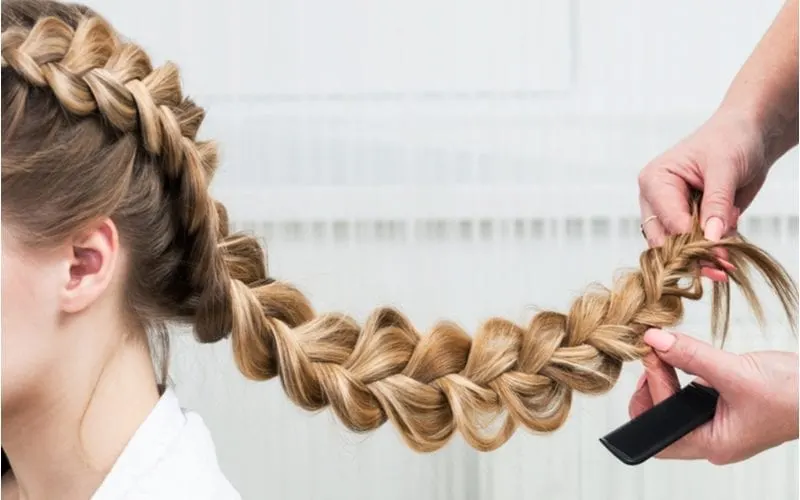
Terekhov Igor/Shutterstock
The absolute minimum hair length needed to braid is about 2 inches. But it may need to be longer for certain types of braids.
Braiding or plaiting hair for both sexes is nothing new. While it’s been thought of as a hairstyle for women in more recent times, braiding has been practiced in cultures since 3500 BC by both women and men.
Especially in Ancient Greece and Egypt, men with long hair would wear it in braids as a symbol of status.
Wearing your hair braided has a ton of benefits, whether you’re male or female.
Because it’s such a versatile style, there are literally hundreds of ways to wear braided hair. Intricate braids are eye-catching and accentuate hair color and texture. Simple braids are timeless and classic.
Man braids are on the rise, and they can add a unique edge to your current hairstyle. But if you’re thinking of braiding your hair, length might be an issue. How long does hair need to be before you can braid it?
A little length is required before hair can be coaxed into plaits. No matter what kind of braid you want to do in your short hair, you’ll find length requirements and details on how to do braids for women and men in this guide. Let’s get started!
Read Next: Types of Braids
How Long Does Hair Need to Be for Braids?
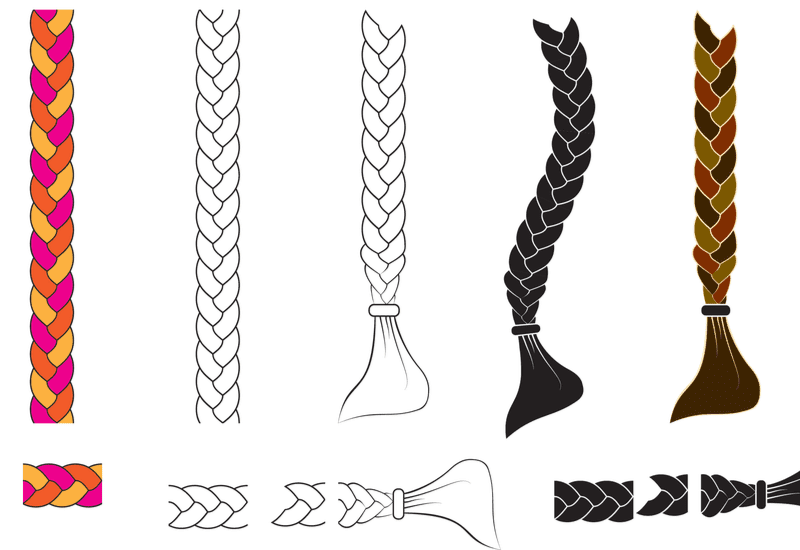
Akif Kutlu/Shutterstock
First things first: The length required for braiding. The answer varies based on the type of braids you’re planning to rock.
The minimum length of hair to be braided is about 2 inches. This is just enough hair to wrap around the fingers during braiding. But if your hair is about 2 inches long, you’ll need to find an experienced braider to do it. Braids that can work with around 2 inches of hair include tight cornrows, microbraids, and two-strand twists.
It’s easier to work with and braid hair that is at least 3 to 4 inches long. Generally, the longer your hair is, the easier it will be to braid. That’s because you’ll need to securely hold the different strands of hair to weave them into a braid. Shorter hair makes it harder to keep a grip on the sections while weaving them.
It’s ideal to braid with hair at least 5+ inches long. Once you pass the 4-inch mark, more braid types become possible. The braids also become easier to hold as you weave. You’ll be able to do anything from French to fishtail braids with hair in the 5-8 inch range.
What Hair Type Is Best For Braiding?
If you want your braids to stay in place with very short hair, your hair type may come into play. Some hair types are better suited for braids than others. But all hair types can rock braids with the right technique and supplies!
Braiding Curly Hair
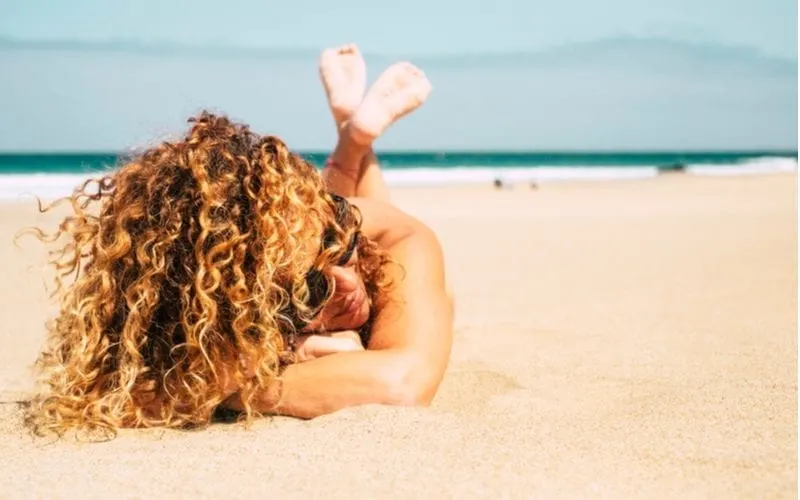
Simona Pilolla 2/Shutterstock
Curly hair can be a great candidate for braiding. Natural curls give the braids a little extra detail and body. It’s also a little coarser and can be pulled a bit tighter than braids on wavy or straight hair.
Messy braids are a great choice for curly hair. Before you braid curly hair, make sure you detangle the hair with a wide-tooth comb. Try not to separate curled sections to avoid making your hair frizzy.
Braiding Coily Hair
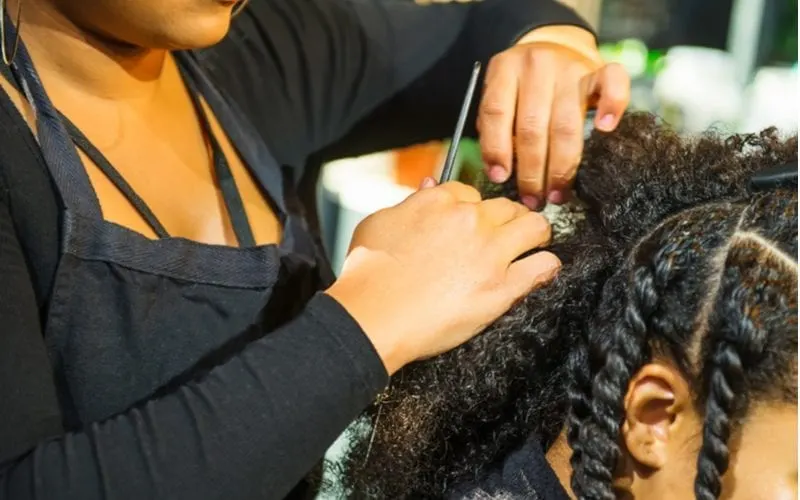
Okrasiuk/Shutterstock
Coily hair is ideal for braiding. The natural volume of the hair, along with the texture, keeps it tightly locked in durable braids that last. The coarser texture enables you to pull the braid tightly as you weave it in. And say goodbye to hair shrinkage with braided styles.
After all, they make the most of your length. Braiding coily hair works best when you use a few hair products first. This hair type actually has fewer cuticle layers on each hair strand, so protect it before braiding with a deep conditioning treatment.
Braiding Wavy Hair
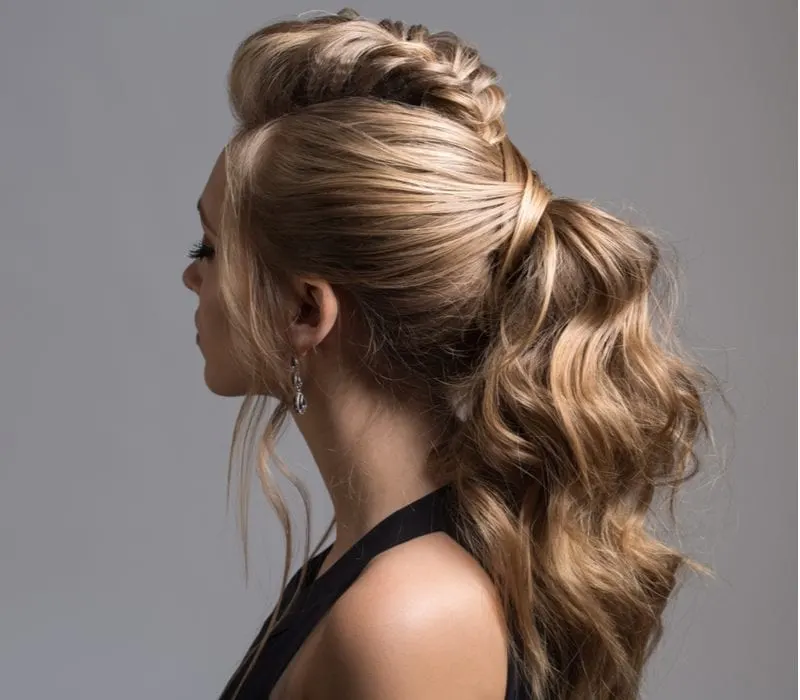
YuriyZhuravov/Shutterstock
Waves give you a good starting point for braids. They keep the individual sections fuller and result in a solid braid that can be locked into place for a few days if secured tightly enough.
You’ll just need to take a few extra steps before plaiting to get the look you want. Wavy hair typically doesn’t have as much volume as curly or coily hair.
So, you may want to start with some dry shampoo throughout the hair and a little hairspray at the roots. Make sure the hair is fully detangled and dry before adding dry shampoo and hairspray.
Braiding Straight Hair
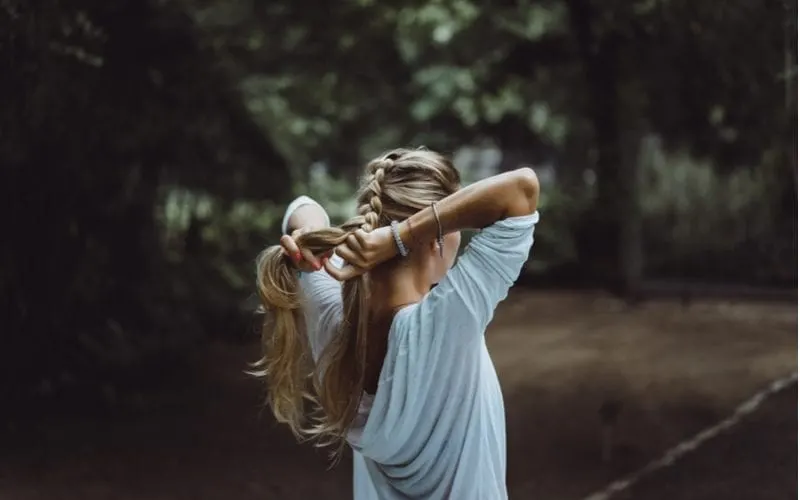
Kirayonak Yuliya/Shutterstock
Straight hair can absolutely be braided, but you’ll need to use some hair products to “build up” your hair texture before you go for it. Braids done without hair products on straight hair may look thinner and less voluminous than on other hair types.
If you’re going for a sleek, polished braid, that may be perfect! If you’d rather try a messy or big braid, reach for a few products first. Volumizing spray or powder is really helpful for braiding straight hair.
In a pinch, you can use dry shampoo instead. Make sure you have hairspray on hand to spritz the roots and lock the style into place when you’re done.
Can You Braid Short Hair?
Is it possible to braid short or very short hair? Absolutely. But keep in mind that some braids, like fishtail or zipper braids, aren’t possible until the hair is longer.
Two things that make it easier to braid short hair, no matter which type you choose: Small finger size and simple braid types. French braids, cornrows, and two-strand twists are the best types of braids for short hair.
They aren’t too complex, so you won’t need as much fingertip sorcery to get the braid done. Two-strand twists only require you to twist two sections. French braids and cornrows use three sections, woven in a repetitive motion.
You’ll also have to gather additional hair with each pass. Regardless of the type you choose, you’ll need at least 2 inches of hair to work with. The longer, the better. As your hair grows, you’ll find it easier and easier to braid it in your favorite style.
How to Do Short Braids
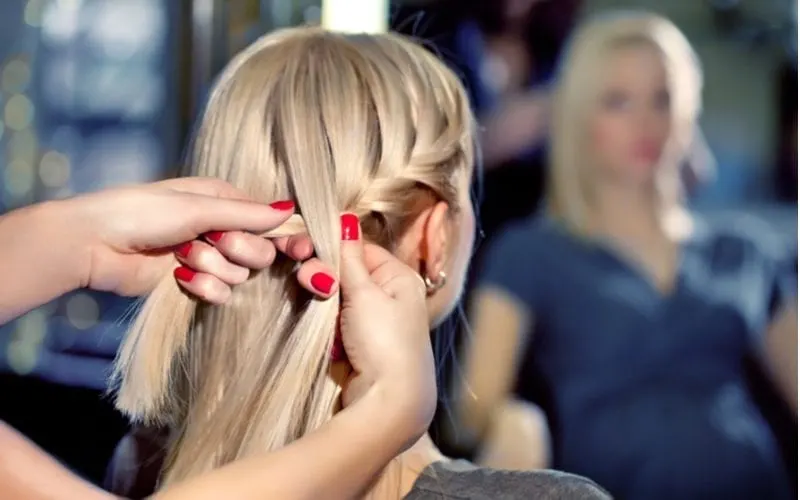
Elena Vasilchenko/Shutterstock
Short braids look great on women and men. For women with pixie cuts, short crops, or short shag haircuts, short braids give you a way to decorate and add detail to your basic hairstyle.
Man braids started trending on social media several months ago, and the style has only grown in popularity since then. There are a range of man braids you might want to try.
The great thing about braids for men is that they can accentuate or blend in with almost any hairstyle. We especially love the look of man braids with a fade or undercut. All-over braids are another popular look.
If your hair is less than 5 inches long, you’ll need to opt for braids that can be done on short hair.
Keep in mind that when it comes to braiding, especially if you’re a beginner, it’s helpful to have someone help you out. Two-strand twists and French braids or cornrows are popular braids that can work with very short hair.
We’ll show you how to do both. The shorter your hair is, the more likely it is that you’ll need to have a skilled stylist do it for you, though. If you’ve got hair around 4-5 inches long, go ahead and give it a try yourself!
The biggest challenge is keeping hold of the very short hair as you work. These steps will show you how to prepare your hair for vertical braids that cover the entire head.
If you’d rather just braid one or two sections, go ahead and use a comb and clip to separate those sections from the rest of your hair before braiding.
Preparing for Braiding
- Elastic bands (small ones are best)
- Firm hold hair gel or hairspray
- Rat-tail comb
- Alligator clips or small hair clips
Depending on your hair type and how much volume you need to add to the braid, you might need to grab some dry shampoo or volumizing spray. Apply it all over your hair and thoroughly comb through before braiding.
- Gather your supplies and make sure they’re easily reachable while you braid.
- Part your clean and detangled hair precisely in the middle using the teeth of a comb or the tail of a rat tail comb. Make sure the part is straight from the front to the back.
- Use the comb to draw a parallel line from the middle part along your scalp all the way back. Use an alligator clip or something similar to hold the section away from the others.
- Repeat, making as many even-sized sections over the head as you want and clipping them up.
How to Do Two-Strand Twists on Short Hair
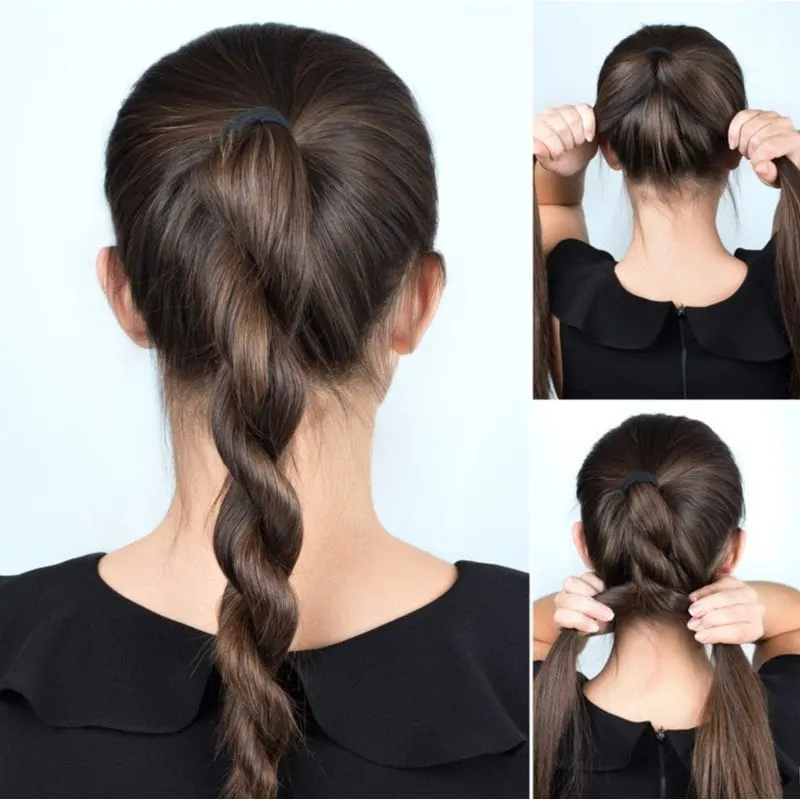
Alter-ego/Shutterstock
Two-strand twists are perfect for very short hair because they don’t involve intricate weaving and tightly secure the twisted hair to the scalp once you’re done. Men and women alike can rock the two-strand twists.
- Remove the clip from the outermost (or bottom, if you’re braiding horizontally instead) section of hair.
- Comb through the unclipped section again and separate it into two equal sections. You may need to start with very short pieces at the top.
- Gather more hair into each section as you twist, trying to pick up an equal amount each time for the left and right pieces.
- Cross the left section over the right until you’ve reached the ends of the hair.
- Secure with a small elastic band and apply a little gel to hold the twist securely.
- Repeat for all other sections you want to braid.
How to Do French Braids or Cornrows on Short Hair
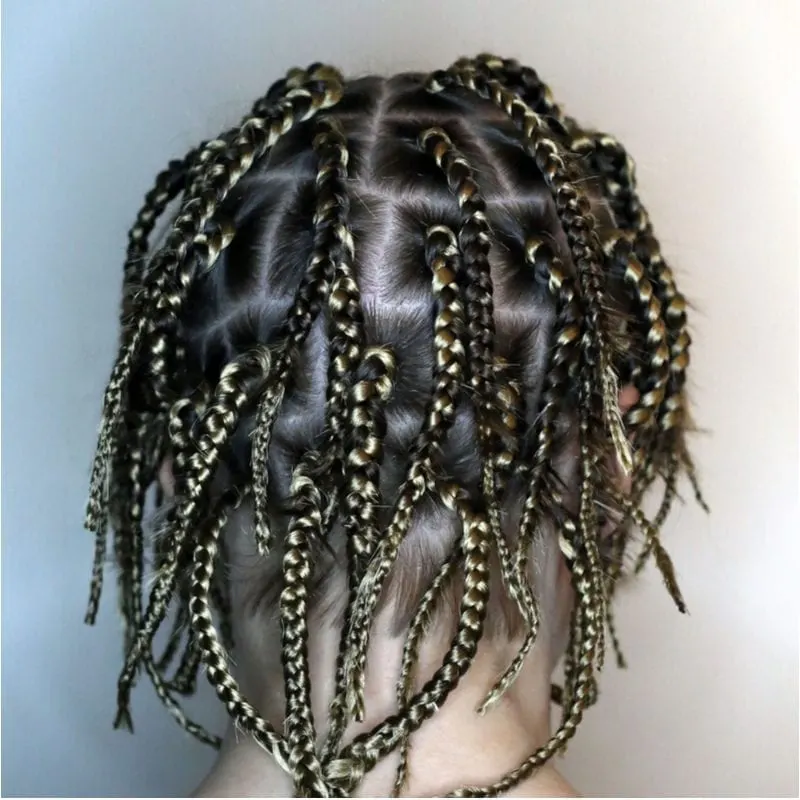
Gorgeoussab/Shutterstock
French braids or cornrows are a great choice for short hair that is at least 4-5 inches long. These braids look great on men and women. It’s a more complex braid than the two-strand twist, but once you pick it up, you’ll be able to do it with your eyes closed.
- Start with a parted-off section and comb through it to remove any tangles. Keep the other section(s) clipped off to the side.
- Separate the unclipped section into three equal pieces. For very short hair, skinnier sections work best. Comb through the three pieces again.
- Hold the hair separately using your thumb, middle, and both index fingers. Move the left piece underneath the middle piece while holding firmly.
- Cross the right piece under the middle piece and give the ends a gentle tug to tighten the forming braid up.
- Use one finger to gather just a little more hair for the left piece, then cross the bigger left piece under the middle again. Do the same for the right piece, adding hair to it and bringing it under the middle. You’ll see your braid beginning to take shape now.
- Secure the braid with an elastic band once you reach the bottom or can no longer pick up the hair.
- Repeat for any other sections of your hair you want to braid.
Things to Consider Before Braiding Short Hair

Moskvina Olga/Shutterstock
Before you start braiding your short hair or call someone to do braids for you, let’s get those expectations in check. Here’s what you should know first.
Short hair may not make the neatest braids. Short hair that is just barely long enough to braid tends to stick out of the braid at different angles. It’s a fun and casual look, but it won’t be the neatest, most polished braid. So, if that’s what you’re going for, you may need to continue letting it grow out a bit.
Don’t braid it wet. Some people believe braiding hair while it’s wet makes it easier, and that may be true. But it can be really damaging for your hair. Wet hair is much heavier than dry, and it’ has 15 times the elasticity while wet. That makes it much more prone to breakage and weakness.
Face shape matters. Ultimately, you can wear plaits with any face shape, but some are more suited for all-over braiding. Braids are really flattering on square, oval, and diamond-shaped faces.
Round, heart-shaped, and oblong faces aren’t the best match for all-over braiding, but you can still slip a braid or two into your hair.
Gather your supplies first. I’ve braided enough to know the frustration of having to let my carefully woven sections of hair fall down because I forgot to grab my elastic band before I started. Get your elastics, hairspray or gel, and clips ready before you start.
And if you have straight or thin, fine hair, go ahead and work the dry shampoo into the hair before beginning. You can’t easily work it in once the hair is braided.
Don’t pull too hard. Constant tension on the hair, like what can be caused from too-tight braids, leads to hair loss. Traction alopecia is easily avoided by pulling your braids only tight enough to be secure, and not so tight they pull on the scalp. If it hurts, it’s too tight.
It never hurts to try. Finally, don’t be intimidated by braiding short hair. Give it a try and see if you can make it work! If you can’t, you can always contact a salon or barbershop in your area to see if they’ll be able to do the braids you want at your current length.
So, How Long Does hair Have to Be to Braid?
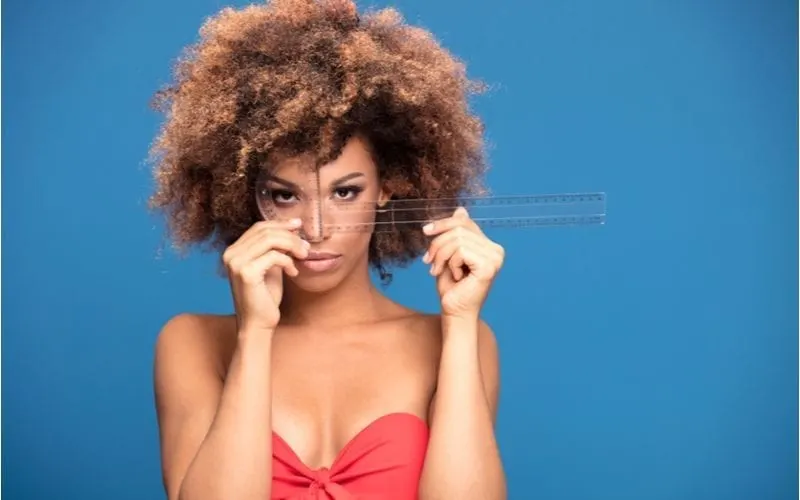
NeonShot/Shutterstock
Lots of people wonder, “How long does hair have to be to braid?” To recap:
You need hair that is at least 2 inches (minimum) long, but it’s best to have hair 4-5 inches.
Know that braiding short hair is a little more challenging than longer hair. But any hair type – coily, curly, wavy, and straight – will look great in braids.
All you have to do is master the technique of keeping hold of your hair sections as you work through it. If you’re sick of wearing the same hairstyle every day with short hair, braids could be the solution for you.
Your hair doesn’t have to be very long to braid, but if your patience (and hair) is short, give yourself time to perfect the process or find a stylist who can make it happen.
